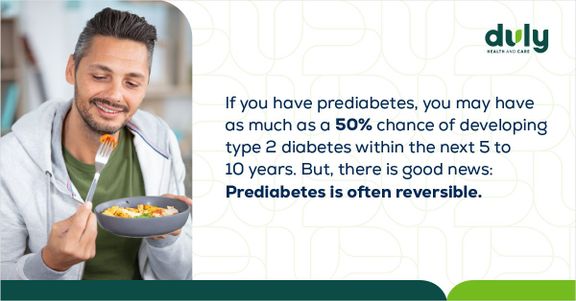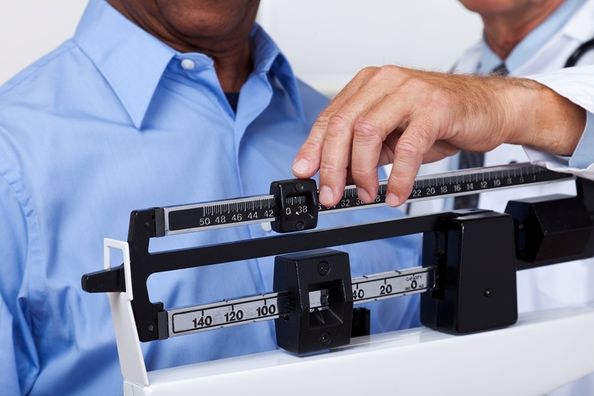You went for your annual physical (yes, you should get a physical exam every year). You got your recommended vaccines. You took your routine blood tests. Nothing seemed out of the ordinary, and you’ve been feeling like your usual self — but then you get your blood test results and learn something unexpected: You have prediabetes.
Prediabetes is a serious health concern that increases your risk for type 2 diabetes, heart disease, and stroke. It’s very common, affecting more than 1 in 3 American adults. Despite how common it is, it’s not always well understood.
If you have been diagnosed with prediabetes, it’s natural to feel overwhelmed and confused — and to have a lot of questions about what to expect.
Here are the answers to some of the most common questions about prediabetes:
1. What Is the Difference Between Diabetes and Prediabetes?
Your body relies on blood glucose (blood sugar) — the primary sugar found in your blood — for energy. When you eat or drink something, it’s converted into glucose and sent throughout your bloodstream. The hormone insulin keeps your glucose at a healthy level.
Diabetes occurs when you don’t produce any or enough insulin or your body doesn’t use the insulin correctly. This results in too much glucose in your blood, and not enough reaching your cells.
Prediabetes occurs when your blood glucose levels are higher than they should be, but aren’t quite high enough to be considered diabetes. If it’s left unmanaged, prediabetes can lead to type 2 diabetes.
Also read: “5 Diabetes Myths — Debunked”
2. How Do You Know if You Have Prediabetes?
Unfortunately, it’s not always easy to tell if you have prediabetes. Some people notice small skin growths (skin tags) or darkened skin in their armpits or around the back and sides of their neck. But in most cases, prediabetes doesn’t cause any symptoms. Because of this, many people — more than 80% — don’t even know they have prediabetes.
The good news is that there are quick, safe, and reliable blood tests for it. There are risk factors that increase your likelihood of developing prediabetes. If you have any of these risk factors, talk to your provider about getting your blood sugar tested if you:
- Are overweight or obese
- Are age 45 or older
- Have a parent or sibling with type 2 diabetes
- Have a personal history of gestational diabetes, heart disease, or stroke
- Gave birth to a baby weighing over 9 pounds
- Have high cholesterol, high blood pressure, metabolic syndrome, or polycystic ovary syndrome (PCOS)
- Are physically active fewer than 3 times per week
- Are African American, American Indian, Hispanic/Latino, Native Hawaiian, Pacific Islander American, or Asian American
Whether you have symptoms or not, getting tested when you’re at high risk for developing type 2 diabetes is one of the most important steps you can take. The earlier you find that your blood sugar levels are inching toward diabetes, the easier it may be to reverse prediabetes.
3. Can Prediabetes Lead to Type 1 Diabetes?
No — prediabetes can only develop into type 2 diabetes.
The vast majority of people with diabetes have type 2, which is when their body doesn’t use insulin well. This type is often preventable by diet, exercise, and maintaining a healthy weight. If you are able to prevent or reverse prediabetes, you may also prevent or delay the onset of type 2 diabetes.
Type 1 diabetes, on the other hand, is when your body makes very little or no insulin at all. It only occurs in about 5 to 10% of people with diabetes. There’s no known cause, but it’s thought to be due to an autoimmune reaction, meaning your body accidentally attacks itself. Type 1 diabetes cannot be prevented — which means that while keeping up a healthy lifestyle is still important, preventing or reversing prediabetes won’t make a difference if you develop type 1 diabetes.
Want to get screened for prediabetes or learn more about diabetes prevention? Make an appointment with your primary care provider to see if you could benefit from a referral to a dietitian/diabetes care and education specialist at Duly Health and Care.
4. What About Gestational Diabetes?
Gestational diabetes is diabetes that occurs when you are pregnant. It’s a little different than the other types because it’s due to your body making more hormones or going through changes like weight gain. That’s why it usually goes away soon after giving birth.
Prediabetes doesn’t necessarily cause gestational diabetes, but it is a known risk factor for it. And since about half of women with gestational diabetes do go on to develop type 2 diabetes in the future, it’s best to do everything you can to keep your blood sugar in check before and during your pregnancy. While gestational diabetes isn’t always preventable, getting to a healthy weight before getting pregnant and making sure that you don’t gain too much weight while pregnant may lower your risk.
5. Is Prediabetes Reversible?
Often, it can be.

Lifestyle changes can greatly decrease your risk for prediabetes turning into type 2 diabetes, such as:
- Getting regular physical activity (at least 150 minutes per week of activities like brisk walking)
- Losing weight if you are overweight
- Adopting a healthier diet that includes:
- Non-starchy vegetables, like broccoli, cucumbers, peppers, or spinach
- Whole foods rather than highly processed foods
- Foods that are low in sugar
- Smaller amounts of carbohydrates and fats
- Water instead of sugar-sweetened beverages
Small changes in your lifestyle can make a big difference. Losing only 5 to 7% of your body weight — which is just 10 to 14 pounds in someone who is 200 pounds — can decrease your risk for prediabetes turning into type 2 diabetes.
Also read: “6 Ways You Can Prevent Type 2 Diabetes”
If you find out that you have prediabetes, don’t wait to take action. When your blood sugar levels are inching toward diabetes, taking steps to lower those levels as soon as possible is key to reversing diabetes and decreasing your risk for type 2 diabetes.
Health Topics:








